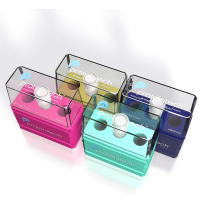Measurement of Oxidized and Reduced Coenzyme Q in Biological Fluids, Cells, and Tissues: An HPLC-EC Method
互联网
互联网
相关产品推荐

OLR1/OLR1蛋白Recombinant Human Oxidized low-density lipoprotein receptor 1 (OLR1)重组蛋白C-type lectin domain family 8 member ALectin-like oxidized LDL receptor 1 ;LOX-1 ;Lectin-like oxLDL receptor 1 ;hLOX-1Lectin-type oxidized LDL receptor 1蛋白
¥1344

Methylmalonyl Coenzyme A mutase/MUT 多克隆抗体 17034-1-AP
¥1350

cdtB/cdtB蛋白Recombinant Escherichia coli Cytolethal distending toxin subunit B (cdtB)重组蛋白Deoxyribonuclease CdtB (EC:3.1.-.-)蛋白
¥2328

CXCL12,SDF1,SDF1A,SDF1B/CXCL12,SDF1,SDF1A,SDF1B蛋白Recombinant Human Stromal cell-derived factor 1 protein (CXCL12) (Active)重组蛋白SDF-1, C-X-C motif chemokine 12, Intercrine reduced in hepatomas, IRH, hIRH蛋白
¥2124

MKN45人低分化胃癌细胞|MKN45细胞(Human Poorly Differentiated Gastric Cancer Cells)
¥1500
相关问答

